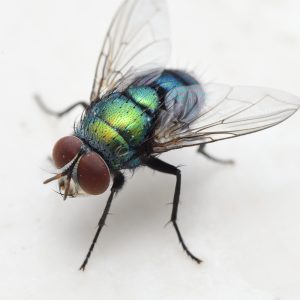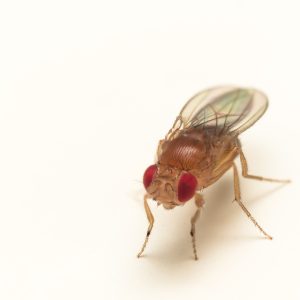Description
| Size | Medium-sized flies; 1/4 – 3/8 inches in length |
| Color | Dark gray with golden yellow hairs on the top of the thorax |
| Body Structure | Cluster flies are similar in appearance to many other common flies. They have the same basic oval body structure consisting of a head, thorax, and abdomen. They have six legs, 2 antennae, and a single pair of wings. Cluster flies hold their wings flat over their backs with their wingtips crossed. The golden yellow hairs on their thorax may rub off as the flies age making the hair appear patchy. |
| Characteristics | Cluster flies are an occasional invader sometimes categorized as an “over-wintering insect.” This category is used to describe insects that spend the winter as adults inside man-made structures. Cluster flies fly to structures and outside temperatures begin to drop in the fall. The flies find cracks and voids in buildings and form clusters where they hibernate until spring. For most of the year, cluster flies are not a nuisance to people. It is only in the fall when they invade structures that they are noticed or become pests. Even then, if the flies stay in the voids where they will spend the winter they will likely go undetected by many people. However, they occasionally enter living spaces, sometimes in the hundreds, or form large clusters on the sides of the home. Cluster flies are parasites of two genera of earthworms. Female flies lay their eggs in cracks at the soil surface where the larvae hatch after several days to seek out earthworms. Cluster fly larvae feed for 22 days inside the earthworm body. Pupation takes about two weeks and the adults emerge and feed on flowers. It is common for four generations to occur throughout the summer. |
| Habitat & Behavior | Cluster flies are not a significant pest species for most of the year. They spend the spring and summer outdoors. The larval stage parasitizes earthworms and adults feed on flowers. In the late summer as temperatures drop the flies are attracted to the warmth of man-made structures to hibernate. While in this state of diapause (insect hibernation), they can be awakened and create a nuisance. Once inside homes they are attracted to windows and lights and will buzz around lethargically. |
| Commonly Active | Fall |
| Risks of Infestations | Cluster flies cause no structural damage and pose little health risks to animals. If a large number of flies die inside walls or attics they can become a food source for dermestid beetles. When hundreds or more of these flies are present on the exteriors of homes or inside living spaces they can be a great annoyance for residents. |


